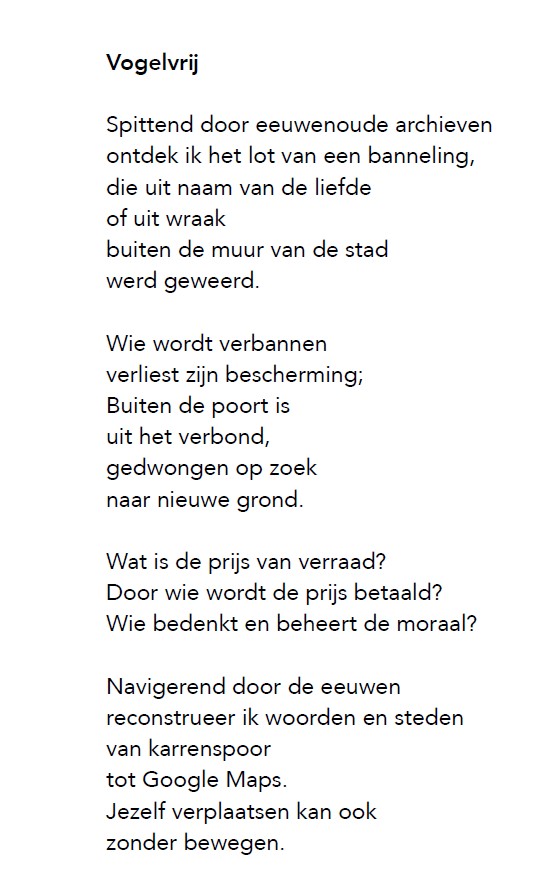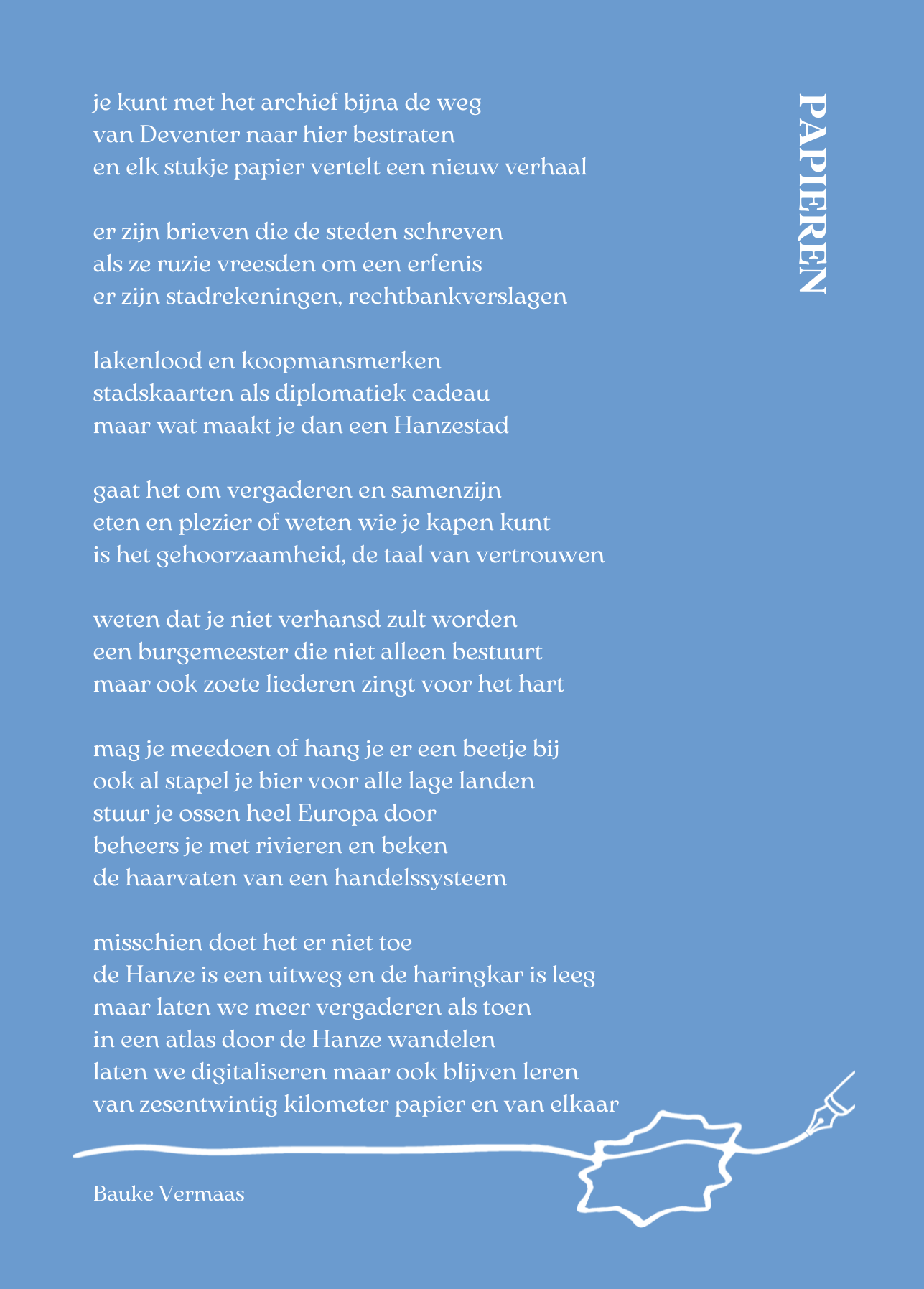Hanse Symposium in Zwolle (7.09-8.09. 2023)
Justyna Wubs-Mrozewiczhttps://collectieoverijssel.nl/hanzesymposiumzwolle/
The symposium was organised by Collectie Overijssel and our project members Ester, Christian and Justyna.
Day 1
From 7 to 8 September, the Theodorakapel in Zwolle became the place to learn about current developments in international Hanseatic research. In the context of the Hanzejaar 2023, historians came together to present their archival and archaeological finds and to discuss with each other and the public the state of the art of Hanseatic research, as well as potential future avenues. What are promising research topics and how can academics and the public come together in learning about the history of the Hanse – locally, regionally and internationally?
Vincent Robijn, director of the Collectie Overijssel, chaired the two days during which the participants delved into Hanseatic history and, in particular, the trade network of the region in which the symposium took place: Overijssel and, most prominently, of its major cities Zwolle, Kampen and Deventer. The trade and culture of the Hanse were highlighted from different angles like diplomacy, mobility, urban norms and values, language and art. This versatility was also reflected in the format of the symposium. Both days were introduced and concluded with poems and music by (former) Overijssel city poets.
Thus, Johanneke ter Stege, singer-songwriter and former city poet of Deventer, introduced the first day with the Hanseatic Experience song 'After Us'. Her performance was followed by the first presentation which provided a comprehensive insight into the developments of the European Hansemuseum in Lübeck, presented by its director Felicia Sternfeld. Her thoughts on how to present Hanseatic research to a wider audience fitted well with the aim of the symposium. The question of how to connect medieval source material with the latest technological developments recurred in the discussion of Viabundus' digital roadmap and in weighing opportunities and challenges of machine transcription of early modern manuscripts in the Collectie Overijssel. And how best to combine history and location? Over the recent years, the Hansemuseum has approached this question by integrating itself into the city, literally and figuratively. On the one hand, archaeological excavations on the site of the museum are exhibited in their current state; the museum's very architecture links the old and new parts of Lübeck. On the other hand, residents and visitors are directly involved in the research. For exhibitions, this means a combination of presenting source material in traditional showcases and an emotionally-focused approach with stage rooms, where the visitor literally comes face-to-face with history, can feel it and reach out.
The connection between present and past also took a prominent place in the presentation of the international Viabundus project in which Bart Holterman (Deutsches Schifffahrtsmuseum, Bremerhaven) highlighted the value of digital humanities for historical research. As a 'medieval route planner', the project reconstructs the routes of land transport between 1350–1650. 'That's no use to medieval people anymore' but Holterman showed how the project offers current researchers a visual impression into what travel over land might have looked like in the past. In the case of the Hanse, this mainly refers to traders transporting their goods through the German territories and Low Countries to the annual fairs in the west. The most logical routes, with details on the duration of the journey and the number of bridges, ferries and toll points, can be uncovered through Viabundus. Since contemporary travellers barely used maps for navigation, reconstruction must rely on written sources, such as travel journals, as well as later maps from the sixteenth to nineteenth century maps. Carefully taking into account the limits and pit-falls of these sources, together they can provide an important impression of the medieval road network.
If the Viabundus project had existed in the Middle Ages, it would have been useful for the individuals who stood in the centre of the following presentation: exiles from the Hanseatic city of Kampen who had to continue their lives several miles outside the city walls. Edda Frankot (independent researcher) discussed social and economic exclusion in the medieval community, presenting her observations after working through archival records in Kampen. Rather than a punishment, she argued, exile was imposed as a measure; many bans, therefore, constituted a reaction to the non-payment of (high) fines for acts of violence, not to penalize the violence itself. Frankot also demonstrated that analysing the practice of exile in Kampen can help us form a picture of the norms and values in a medieval city. Thus, she observed a greater emphasis on moral in the language of her sources during the last quarter of the fifteenth century. Even though banishment was not yet a final exclusion (the exile could return to the city afterwards), the sources show that the tolerance of ‘immoral’ behaviour declined in the period leading up to the Reformation.
The exploration of archival sources was continued by Christian Manger and Ester Zoomer who presented the initial results of their research as ‘Hanse fellows’ of the Collectie Overijssel. Focussing on the leading questions of what exactly can be said about Zwolle's position in the Hanse, they highlighted both the opportunities and limitations of the Overijssel archives. While the archival material collected in Zwolle under the label ‘Hanse’ mainly informs us about general Hanseatic affairs, a shift towards a broader source base can provide insights into a more specific Overijssel-related history. Minutes, missive books and city accounts of Zwolle, Kampen and Deventer lay a trail of breadcrumbs that can lead researchers to other archives which may have preserved the respective records of meetings or correspondence. For instance, the city archive of Tallinn, one of the Hanseatic cities geographically furthest away from Overijssel, retains a comparably substantial collection of letters from Kampen and Deventer; a starting point for cooperative international Hanseatic research, reflecting the complex collaborations and rivalries that defined the networks of the 200-plus Hanseatic cities in the early modern period.
Before the audience moved on to the Hanseatic beer and products, the presentations ended very fittingly with insights into research on how these products were transported by the Hansards themselves: in barrels and vats. Jeroen Oosterbaan (Leiden University) opened his presentation by asking to what extent the introduction of the modern sea container may be compared to the large-scale use of barrels as packaging material in the late middle ages. Over the course of his paper, Oosterbaan drew convincing parallels. Both the introduction of barrels and containers were connected to the adaptation of transport sectors (in the form of ships and ports), the reduction of transport costs and the specialisation of trade networks (e.g. the standardisation of unit sizes). There was, however, one important difference. For merchants in the late Middle Ages, the preservative effects of barrels and vats extended the shelf-life of their products.
To conclude the day, Johanneke ter Stege presented a poetic summary of the first round of presentations.
Day 2
The second day picked up where we left with Bauke Vermaas, the city poet of Zwolle, opening with a reading of poetry. The first academic contribution of the day, however, was given by Justyna Wubs-Mrozewicz (Universiteit van Amsterdam) who presented part of the VIDI project ‘Managing multi-level conflicts in commercial cities in northern Europe (c. 1350-1570)’. When researching conflict, she proposed, we should move away from exclusively focussing on how they were resolve. Instead, we also need to take into account that contemporaries invested into the prevention, escalation, de-escalation, and maintenance of the status-quo of conflicts. The Hanse itself was an important institution to prevent conflict through a variety of tactics, among them meetings and extensive communication, discourses of trust and reciprocity, but also practical measures like merchant marks.
The theme of conflict management was also picked up by Jurriaan Wink (Vrije Universiteit Brussel) who zoomed in on the detailed case study of a dispute between English merchants and the town of Kampen in the 1470s. He demonstrated how individual cities could utilize their membership in the Hanse to their advantage even in their own conflicts. This became the case when the English merchants attempted to bring their case before the Great Council of Mechelen which the Kampen magistrates aimed to avoid due to the town’s tense relations with the Duke of Burgundy. Instead, the town’s council managed to include the dispute in the peace treaty between the English king and the Hanse in 1474 by threatening to otherwise abstain from signing the contract and thus endangering the diplomatic negotiations.
After this close-up of a short episode of Hanseatic history, Hanno Brand (Fryske Akademy) zoomed out again to present a long-term perspective on the Frisian towns Staveren and Bolsward and their status as Hanseatic cities. Tracing the two towns through several centuries, he stressed the fluidity of membership in the Hanse. While not partaking in Hanseatic diets for most of the fifteenth century, Staveren remained included in the meetings’ sitting-order and in 1557 both towns even constituted part of the 63 central towns of the formalized Hanseatic confederacy.
Following a lunch-break, Suzie Hermán (Princeton University/Leiden University) demonstrated how much Hanseatic research can profit from an art historian’s perspective. Challenges in the later period of the Hanse, she argued, led to Hansards wishing to confirm and strengthen their identity, not least through art. Studying the city-atlas Civitates Orbis Terrarum (1572–1617) she pointed out reciprocal relations between the author Georg Braun and several high functionaries of the Hanse, first and foremost syndic Heinrich Suderman. These Hansards contributed information as well as texts to the atlas and in turn gave the Hanse and the Hanseatic identity of its cities a prominent place in the work.
Finally, Jeroen Benders (Rijksuniversiteit Groningen) tackled the question ‘Was there non-Hanseatic trade in the Netherlands?’ by looking at the mercantile networks of certain goods (wood, oxen, beer) involving the Hanseatic town of Hasselt. He showed that regional as well as interregional trade existed parallel to or intertwined with Hanseatic trade. Thus, while a town Hasselt may have qualified as small town (Kleinstadt) in the Hanse, it appears substantially more relevant when taking into account its other trade connections and, for instance, the distribution system within the Netherlands.
What is the best way to end two days of knowledge exchange and research? Of course, with the launch of new Hanseatic research. Frank Inklaar introduced the 'Atlas van negen Hanzesteden’ (Atlas of Nine Hanseatic Cities), an amalgamation of scientific research and public perception of the Hanse. Inklaar presented an overview over the changes in image and identity the Hanse has undergone in Overijssel cities in recent decades. Pointing out the influence which marketing and tourism had on popular idea of the Hanse, he introduced the 'Atlas of nine Hanseatic cities' as a corrective and to bring the academic side of the story back into the public knowledge of the Hanse. The richly illustrated book covers the cities of Doesburg, Zutphen, Deventer, Hattem, Zwolle, Hasselt, Kampen, Elburg and Harderwijk.
.jpg)


